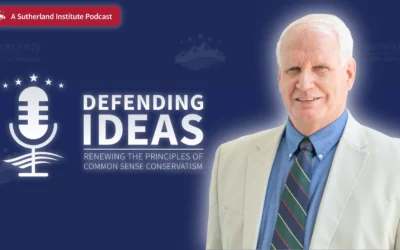
Written by William C. Duncan
February 4, 2022
The first chief justice of the U.S. Supreme Court, John Jay, was a remarkably accomplished man. As the website of the John Jay Homestead summarizes:
Of all the Founding Fathers, no other filled so many high offices. John Jay served the State of New York as a principal author of its first constitution in 1777, and as its first Chief Justice. He served the nation as President of the Second Continental Congress, Minister Plenipotentiary to Spain during the Revolutionary War, and Secretary for Foreign Affairs under the Articles of Confederation. He was author and key negotiator, with Benjamin Franklin and John Adams, of the Treaty of Paris, which ended the American Revolution. With Alexander Hamilton and James Madison, he wrote the Federalist Papers, arguing for adoption of the United States Constitution. After the ratification of the Constitution, President Washington appointed Jay the first Chief Justice of the United States.
Appointed as chief justice by President George Washington, Jay was asked by the president to step away from the court’s work to negotiate a treaty with England. When he returned, he left the court completely to run for governor of New York.
President John Adams wanted to return Jay to the court in 1801, but Jay declined because the judicial branch of the federal government was not “on a proper footing” with the other branches. “Hence I am induced to doubt both the Propriety and Expediency of my returning to the Bench under the present System.”
Jay’s hesitance seems remarkable today when becoming a Supreme Court justice puts one at the height of influence in our constitutional system.
The importance of that role will be reflected in the close scrutiny the next nominee to the court is likely to receive.
The dramatic change in the significance of the justices’ role derives from the interplay of two concepts.
First is judicial review. Established in a limited way in the early years of the court, judicial review is the power to invalidate state and federal laws at odds with the U.S. Constitution. This power, which is more commonly employed today than in the past, provides a critical protection for the Constitution. There is widespread support for the court’s use of judicial review when the conflict between a law and a constitutional provision is clear.
But when the conflict leading to its use is between a law and a disputed interpretation of a constitutional provision, the application of judicial review is far more controversial.
The other principle, precedent, makes it far more significant as well.
Take a recent example from the religious freedom context. In June 2021, the court ruled in Fulton v. City of Philadelphia that the city of Philadelphia violated the First Amendment right of free exercise by making the participation of Catholic Charities in providing foster care services conditional on the organization adopting a policy at odds with its religious mission.
In the short time since that decision, the court’s ruling has been applied in at least two other contexts.
First, the Supreme Court relied on the decision when vacating the decisions of Minnesota courts that required an Amish community to install septic systems at odds with their religious beliefs or forfeit their homes.
More recently, the Michigan attorney general’s office announced a settlement between the state’s Department of Health and Human Services and St. Vincent Catholic Charities. The charity had been excluded from its contract with the state to assist with foster care placements because it could not, consistent with its religious mission, place children with unmarried or same-sex couples. The settlement allows the charity to continue its work without interference.
The upcoming nomination is not likely to shift the fundamental approach of the court to controversial issues, but justices can serve for a long time (the possibility of walking away to run for state office is slight now). Any justice could conceivably impact important cases and the subsequent decisions that will rely on those cases as precedent.
If John Jay were alive today, he might actively seek out a Supreme Court nomination rather than turning it down out of concern that the court is not on a proper footing with the executive and legislative branches. And the top court’s huge influence today is due in no small measure to the development of the principle of precedent and the power of judicial review.
More Insights
Read More
Protecting property rights against government overreach
While governments can continue to regulate land use, these regulations and fees must be justified by a government interest and proportional to the effect of the development’s impact on that interest.
Do we need to care about the Utah State Board of Education?
For any Utah voters who also feel like K-12 public education is headed in the wrong direction, learning about the candidates running for a seat on the Utah State Board of Education (USBE) is a wise choice this election season.
Defending education choice the right way
Education choice has exploded in popularity across the nation in recent years. So why does it remain a contentious point of debate in some parts of the country?


